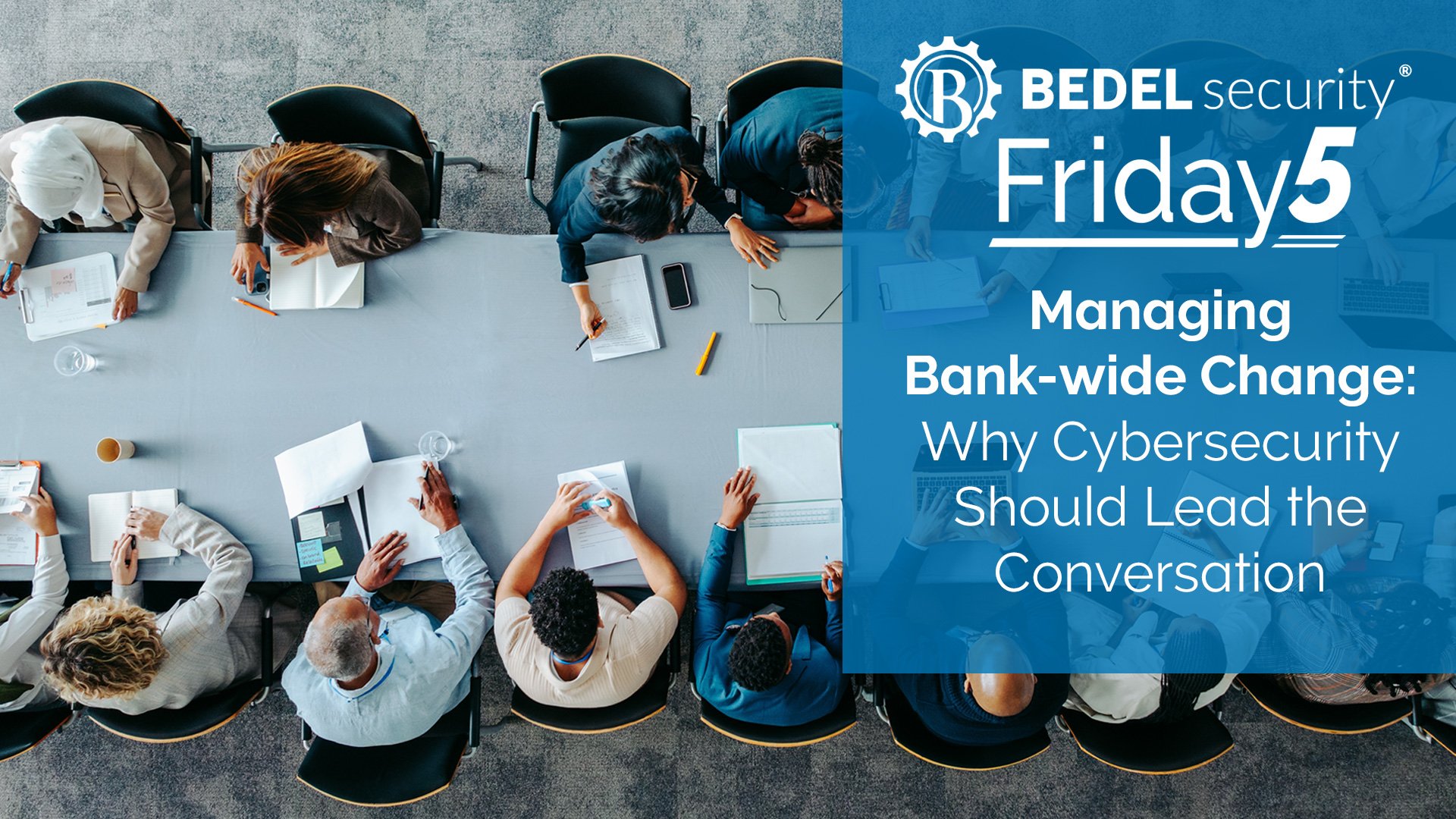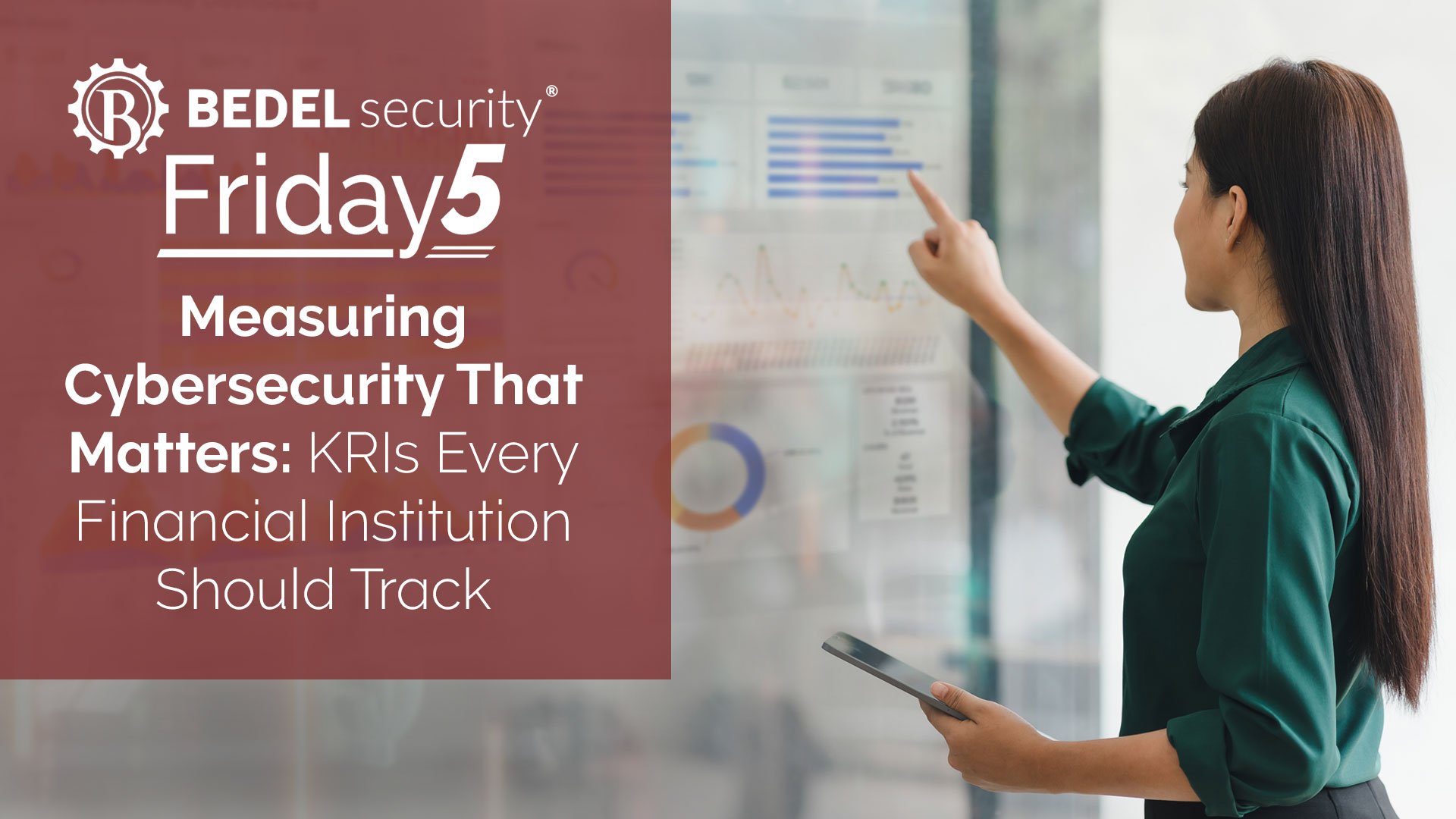3 min read
Managing Bank-wide Change: Why Cybersecurity Should Lead the Conversation
Jordan Rosiak : Oct 31, 2025

Change is a constant in banking. Whether it’s rolling out a new digital banking platform, upgrading your core, or going through a merger, most banks today are in some stage of transformation. These projects are exciting, and they often promise efficiency, innovation, and better customer experience.
But big change also comes with big risk. And one of the most common oversights during these moments is leaving cybersecurity out of the early conversations.
Too often, cybersecurity teams are pulled in near the end and at that point, it’s much harder (and more expensive) to identify and fix security gaps.
To manage change effectively, cybersecurity needs a seat at the table from day one.
Why Cybersecurity Belongs in the Conversation Early
Every major change, whether operational or technological, introduces new access points, data connections, and dependencies. Without early planning, those changes can unintentionally expand your bank’s attack surface.
Some examples of risks that emerge when security isn’t involved early include:
- Unsecured configurations or forgotten test environments left open after deployment
- Vendor access that bypasses standard authentication or monitoring
- Inconsistent role-based access across new systems
- Audit or documentation gaps that create compliance headaches later
In short, when cybersecurity isn’t looped in, visibility decreases and risk increases.
The best time to address security isn’t during the post-implementation audit — it’s during planning, design, and testing.
Recognizing That All Change Carries Risk
Not every change involves new technology. Sometimes it’s a process improvement or departmental restructure. But all change affects systems, people, or data in some way.
Here are a few examples where cyber oversight can make a big difference:
- Moving applications or data to the cloud
- Core conversions or digital platform rollouts
- Introducing AI or automation tools
- Mergers and acquisitions, where networks and user accounts merge
- Adding or replacing critical third-party vendors
Each scenario brings operational benefits but also new exposure if controls aren’t assessed in advance. Recognizing that even “good change” carries cyber risk helps banks plan more intentionally.
Best Practices for Managing Bank-wide Change Securely
You don’t need a dedicated change management system to keep projects secure. A few consistent practices can go a long way.
- Bring Cybersecurity in at the Start
- Include cybersecurity and IT risk teams when scoping a new project or evaluating a vendor. Early involvement ensures that security requirements (e.g., encryption, logging, and data retention) are baked in from the beginning rather than bolted on at the end.
- Document What’s Changing
- Maintain a record of every significant change: what’s being modified, who approved it, and when it went live. Documentation builds accountability, supports audits, and helps the bank understand how each change impacts the overall environment.
- Evaluate Vendor and Integration Risks
- Any time a change involves a third-party tool, integration, or data exchange, perform a vendor risk assessment. Review the provider’s cybersecurity posture, breach history, and incident response expectations. Third-party risk continues to be one of the most scrutinized areas in examinations.
- Test Before You Go Live
- Implement changes in a testing or staging environment before they touch production systems. Validate that access permissions, monitoring tools, and backup procedures all work as expected. This small step can prevent significant downtime or data exposure later.
- Keep Communication Open
- Bank-wide changes affect multiple teams like IT, operations, lending, compliance, even HR. Create clear communication channels, so everyone understands timelines, responsibilities, and potential impacts. A simple update cadence can prevent major misunderstandings.
- Review After Implementation
- Once the change goes live, confirm that it achieved the intended goal and that no new vulnerabilities were introduced. Post-implementation reviews also provide valuable lessons for future projects.
- Once the change goes live, confirm that it achieved the intended goal and that no new vulnerabilities were introduced. Post-implementation reviews also provide valuable lessons for future projects.
Governance and Oversight Matter
Formal governance ensures accountability. Even without a separate change management department, banks can build structure by:
- Adding cybersecurity representation to project steering committees
- Requiring risk assessments for all major changes or vendor additions
- Embedding security checkpoints into project timelines
- Keeping the board and senior management informed of major initiatives and their associated risks
When cybersecurity is embedded into governance, it becomes a natural part of decision-making and not an afterthought.
Regulatory Expectations
Regulators increasingly focus on how banks control change. The FFIEC Information Security Booklet states that changes to information systems should be “planned, authorized, tested, and approved prior to implementation.”
The NIST Cybersecurity Framework (CSF 2.0) echoes this by emphasizing governance and continuous improvement. Meanwhile, the GLBA Safeguards Rule expects institutions to adapt safeguards as systems evolve.
In short, regulators expect banks to demonstrate control. Consistency, documentation, and risk awareness are key, and constant improvements are important and necessary.
Cybersecurity as a Strategic Partner
It’s easy to see cybersecurity as the “department of no.” But when engaged early, cybersecurity can actually help projects move faster and safer.
By identifying risks upfront, suggesting compensating controls, and aligning security goals with business objectives, cybersecurity becomes a strategic partner rather than an obstacle.
This shift in mindset builds trust across departments, strengthens regulatory confidence, and supports a more resilient organization overall.
Managing change isn’t about slowing progress; instead, it’s about ensuring progress happens securely.
Interested in strengthening how your institution manages change? Contact us to discuss how you can stay ahead of evolving threats and expectations.

Measuring Cybersecurity That Matters: KRIs Every Financial Institution Should Track
For regulators, auditors, and your board, good cybersecurity isn’t just about having controls in place—it’s about proving they work. That’s where ...

Beyond the CAT: Building on a Foundation That Lasts
Introduction As most bankers know by now, the FFIEC Cybersecurity Assessment Tool (CAT), first released in 2015, will officially sunset on August 31,...
